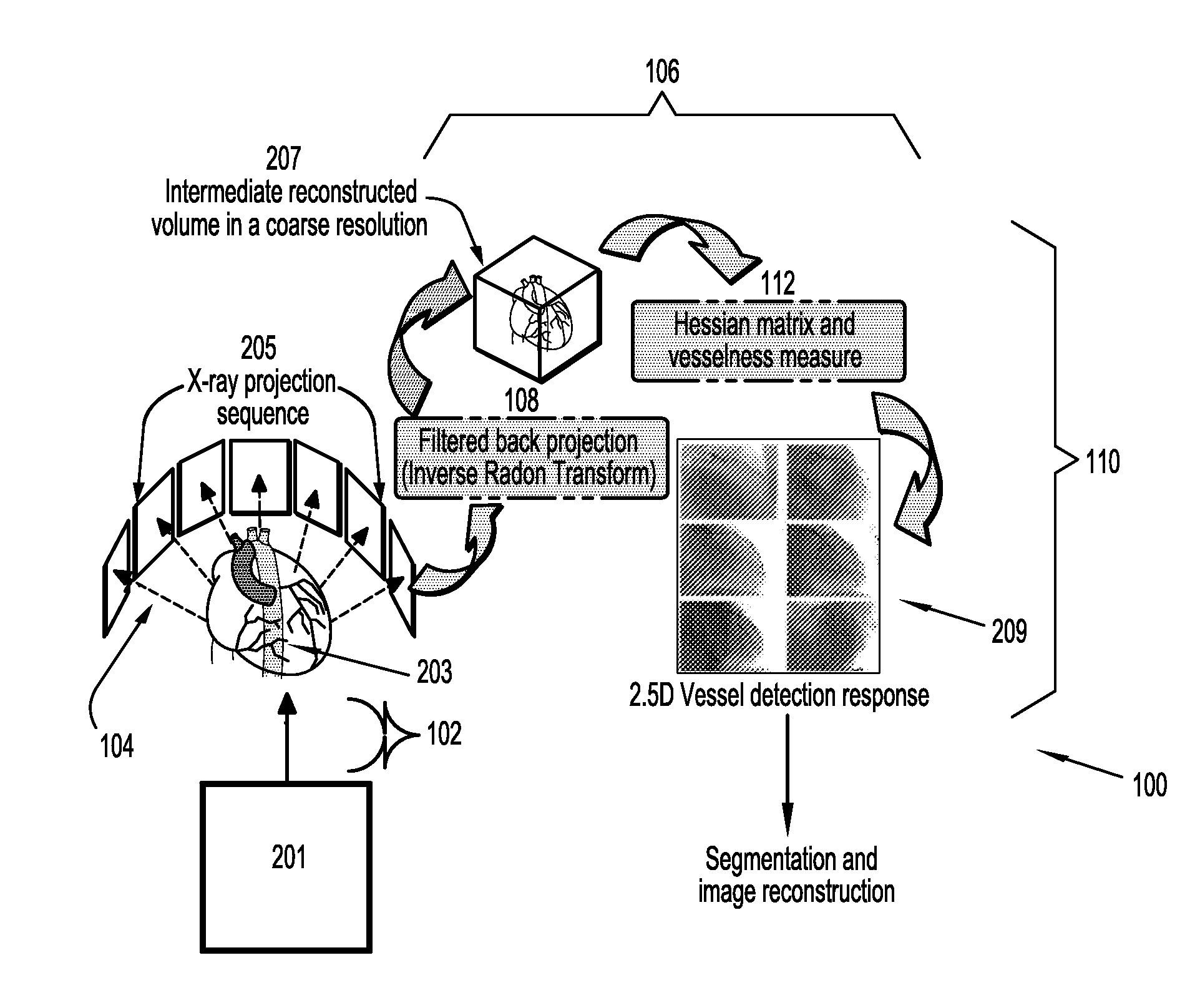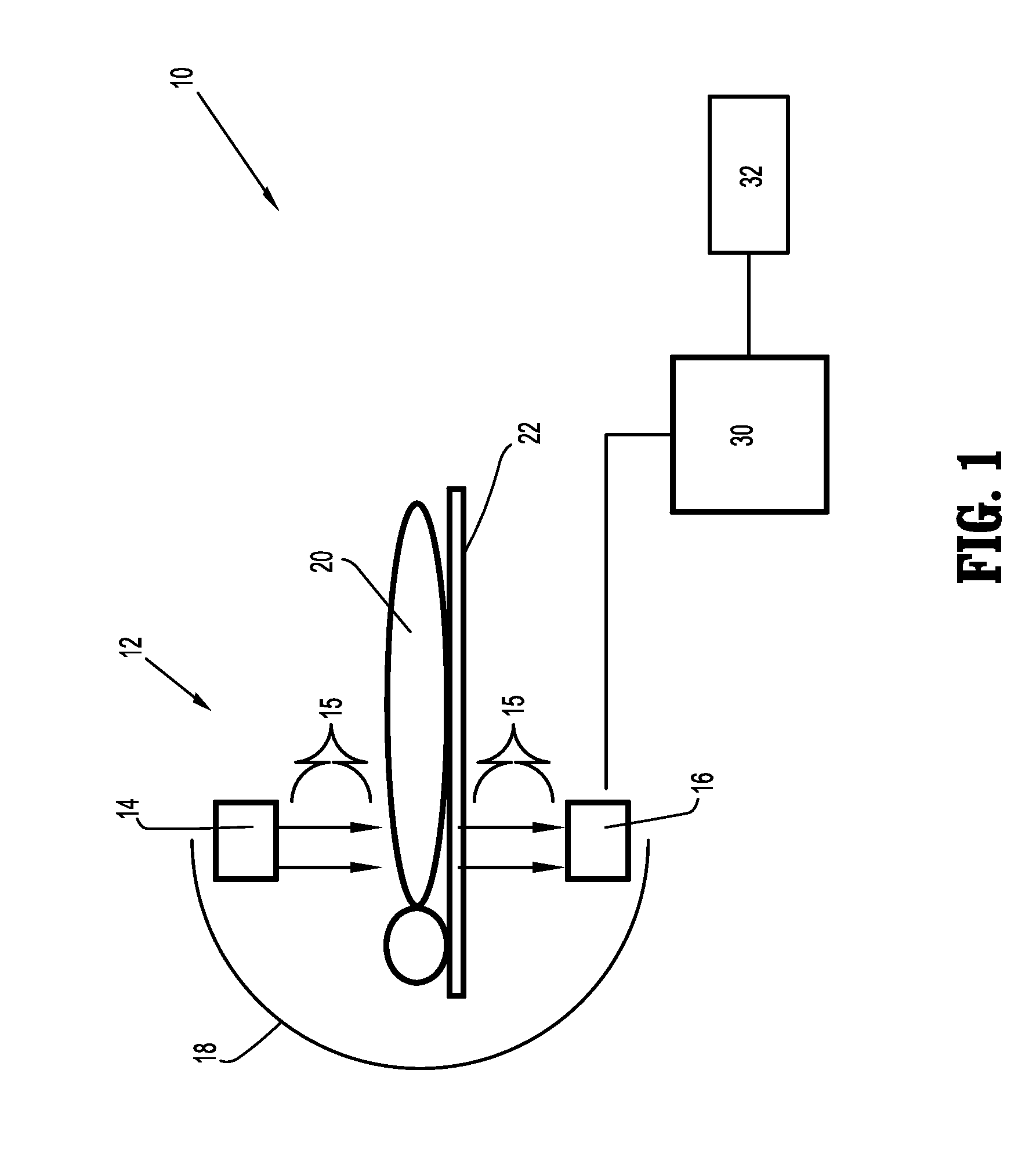Vessel Extraction Method For Rotational Angiographic X-ray Sequences
a rotational angiographic and x-ray sequence technology, applied in the field of x-ray imaging, can solve the problems of insufficient segmentation results for reconstruction, and the inability to exploit the correspondence between different image frames during the segmentation process
- Summary
- Abstract
- Description
- Claims
- Application Information
AI Technical Summary
Benefits of technology
Problems solved by technology
Method used
Image
Examples
Embodiment Construction
[0019]FIG. 1 is a block diagram of an X-ray imaging system 10 (simplified) that operates in accordance with the present invention. The system 10 comprises a rotational X-ray imaging apparatus 12 having an X-ray source 14 that generates X-ray beams 15 towards an X-ray detector 16. The X-ray source 14 and the X-ray detector 16 are mounted on opposite ends of, and coupled to one another via, a rotatable C-arm gantry arrangement 18. A patient to be imaged 20 is positioned on a support table 22 between the two components 14, 16 such that the X-ray beams 15 pass through the patient 20, and in particular, the coronary region of interest, and project onto the X-ray detector 16. The detector 16 converts the raw X-ray projections into image data signals for subsequent processing by the X-ray imaging system 10. As a result of the rotation of the C-arm 18, the X-ray source 14 and the X-ray detector 16 are moved about the patient20 and the table 22 in a coordinated manner so that the X-ray proje...
PUM
 Login to View More
Login to View More Abstract
Description
Claims
Application Information
 Login to View More
Login to View More - R&D
- Intellectual Property
- Life Sciences
- Materials
- Tech Scout
- Unparalleled Data Quality
- Higher Quality Content
- 60% Fewer Hallucinations
Browse by: Latest US Patents, China's latest patents, Technical Efficacy Thesaurus, Application Domain, Technology Topic, Popular Technical Reports.
© 2025 PatSnap. All rights reserved.Legal|Privacy policy|Modern Slavery Act Transparency Statement|Sitemap|About US| Contact US: help@patsnap.com



